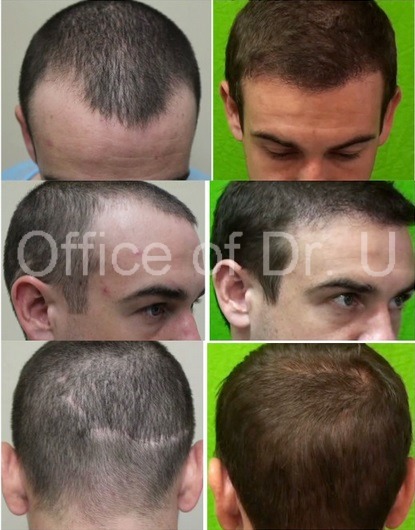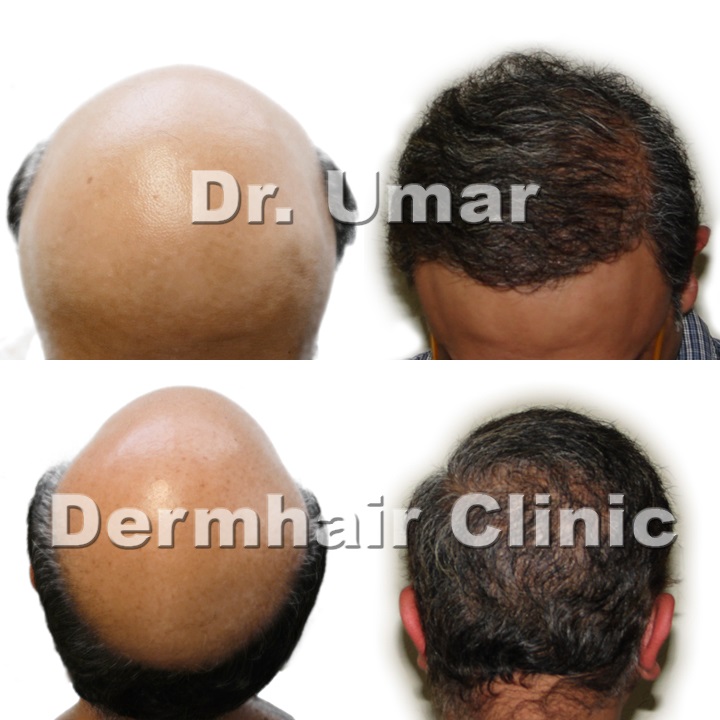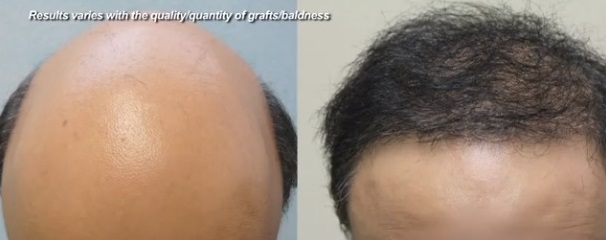Who is a Good Hair Restoration Candidate? Appropriate Age
Hair loss may start occurring in individuals who are still in their late teens or early twenties. At this stage in life, personal attractiveness is often central to an individual’s self concept. So when pattern baldness strikes early, there is understandable a stronger sense of urgency to take action.
Most hair restoration clinics are reluctant to perform hair transplantation on younger patients. Their natural hair will most likely continue to shed, long after their procedure. So for example, if a person in their early twenties undergoes a hair restoration too soon, empty areas may form in other areas on their scalp. These will need to be filled in through subsequent surgery.

However, if the individual feels strongly about undergoing a hair transplant right away, a good young hair restoration candidate will need to be aware that future procedures will be likely. And proper financial planning would become a necessary preparation step.
Who is a Good Hair Restoration Candidate ? Availability of Hair Restoration Donor Follicles
A good hair restoration candidate must have enough donor grafts to achieve their objectives. These follicles would need to come from the same patient, not friends and relatives. Our immune systems are designed to recognize protein signatures. And it will attack tissues that it deems to be foreign. Therefore, grafts from other people will not survive. The only exception would be identical twins.
Conventional hair transplant clinics are only able to remove donor follicles from the patient’s scalp. This includes strip surgery and Follicular Unit Extraction. Standard straight FUE punches can safely remove hair that grows close to ninety degrees. But they are likely to damage body hair which grows much sharper and closer to the skin’s surface.

However, Dr. U has developed his Advanced FUE technology, called uGraft to include special features that can reliably extract body hair. Certain individuals who do not qualify for regular hair transplant procedures may be considered candidates for body hair transplantation if they have enough grafts on other surfaces beyond the head.
Who is a Good Hair Restoration Candidate ? Cause of the Hair Loss Condition
Hair restoration surgeries are typically performed for genetic pattern baldness as well as other medical conditions which result in hair loss.
However, an individual may not be a good hair restoration candidate if the cause of their hair loss is due to other causes which can easily be treated. This includes thyroid imbalances (hyperthyroidism and hypothyroidism) which can often be addressed through prescription medications. Also, side effects from prescription medications may also be a culprit. Replacing these drugs, modifying dosages or stopping intake may be viable solutions for regrowing hair. Aspartame is also linked to hair loss.
An individual may not need to consider candidacy for hair restoration if these other issues can be successfully targeted.
Who is a Good Hair Restoration Candidate ? Choice of Surgery (FUE, Strip, Body Hair Transplant)
Whether a person is a good hair restoration candidate or not may depend on the type of hair transplantation they are eligible for. Scalp laxity is often a factor that is an important consideration for strip surgery. However, if this is an issue, Follicular Unit Extraction may be a better option. In follicular unit extraction, punches are used instead of scalpels. Therefore, the tightness of the scalp is irrelevant in FUE.
However, if a patient does not have enough head donor hair to qualify for Follicular Unit Extraction or strip surgery, body hair transplant may be the next best choice. This would require having enough hair of appropriate thickness on regions like:
- the beard areas of the face and neck
- chest
- back
- shoulders
- thighs
A person may not qualify for conventional hair transplant procedures. If head donor supply limitation is a disqualifying factor, it this does not mean that hair restoration surgery is completely out of the question if they have sufficient quantities of body hair.
Who is a Good Hair Restoration Candidate ? Characteristics of Surrounding Tissue and tightness of the hair curl.
According to Dr. U and other hair transplant experts, the tissue which surrounds the hair follicles can affect a person’s ability to qualify for a procedure. In some patients (e.g. individuals of African origin), the surrounding tissue may be quite hard and dense. And efforts to separate the follicles in these environments may produce consistent damage to the grafts. Dr Umar has however invented the UPunch Curl which is an effective FUE tool in patients with tightly curled hair and thick scalp skin
Who is a Good Hair Restoration Candidate ? Tendency Towards Abnormal Scarring and Blood Clotting Formation
Some individuals may develop keloid scars, where scar tissue proliferates well beyond the boundaries of the wound. Others may not be able to form proper blood clots for healing. Since wounding is an inherent part of hair transplant procedures, these issues would unequivocally disqualify a person from undergoing hair restoration surgery.
Who is a Good Hair Restoration Candidate ? Transection Rates
The term “transection” refers to damage inflicted on the graft due to mechanical injury from instruments. This can be caused by characteristics of the surrounding tissue which makes it difficult to safely remove individual grafts. It can also be caused by the shape of the hair follicle. Curved follicles are more challenging to extract with regular punches.
However, the use of specially designed tools, like uGraft, can minimize the risk of damage to these structures. Therefore, the availability of such instruments can drastically lower transection rates. Patients should therefore not assume that a percentage given by one clinic would necessarily apply to all service providers. It may be necessary to inquire about special tools and technology which can reduce the risk of damage to the grafts.
Dr. U will perform preliminary test extractions to determine approximate average rates of transection. High rates, close to 10% are likely to be grounds for disqualification.
It’s Never Too Late For A Hair Restoration Procedure
Through the paradigm of traditional hair transplantation, severely bald individuals (Norwood 6-7) are not eligible for hair restoration surgery. At this late stage, many of their follicles have miniaturized to the point where they can no longer grow hair. Therefore, they have fewer resources available for improving their coverage through a hair transplant procedure.
However, this does not mean that hair restoration is completely out of the question. If the patient has comparable body hair on other areas, these can be repurposed as viable grafts. Since body hair tends to grow at very sharp angles, the use of specialized Advanced Follicular Unit Extraction technology, like uGraft would be necessary to compile the donor supply.
Dr. U has enabled ideal coverage to become possible for many individuals suffering from severe baldness using his revolutionary surgical system for body hair to head transplantation. This is evident through his before and after videos featuring numerous happy patients.
Hope For Impossible Hair Repair Cases
There are many instances where patients require extensive forms of hair repair due to poor results which occurred from past surgeries. With each surgery, the number of donor head hairs dwindles. And there may be drastic scarring which needs to be covered.
This leaves minimal grafts available for corrective procedures. These individuals are considered hopeless by most clinics. While they are not candidates for regular hair transplant repair procedures, they may still qualify for body hair to head surgery using UGraft methods.
Candidacy for hair restoration is often based on many different factors. If you are interested in undergoing surgery, understanding the qualifications for such procedures is important. This is because many clinics differ in their requirements for accepting new patients.
If you think you are a candidate for hair restoration and would like to consult Dr Umar, kindly complete this free online consultation form
Related articles
Are You A Good Candidate For FUE Hair Transplant?
Who is an ideal female hair restoration candidate for head or body hair transplants?
UGraft Hair Transplant Repair Option for a head donor depleted patient

